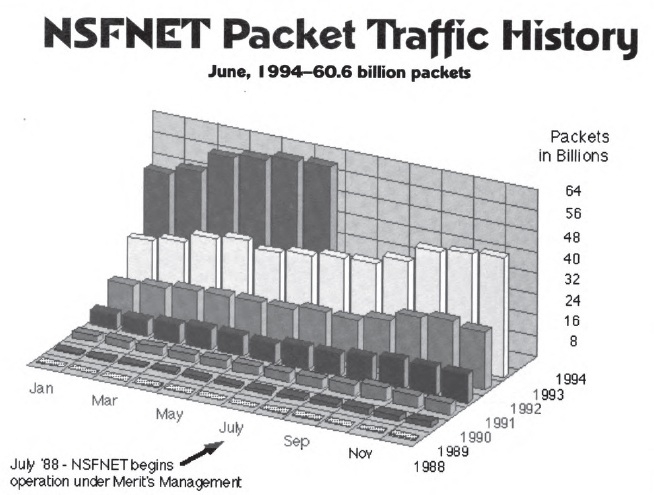Structure of NSFNET

The NSFNET was popular for writing e-mails, sending files, participating in discussion boards, and even communicating with individuals or groups using real-time chat systems, but standard phone lines could not easily carry the data that users were sending.
As a result, the NSF was responsible for building the early high-speed data transmission lines that were connected to the existing telephone infrastructure, allowing faster data transfer rates between networks. Locally, computers connected to a standard phone line using a dial-up modem, but data transmissions using the TCP/IP protocol transferred from the standard phone lines to the data lines and then back to the standard lines to the destination computer.
These high-speed lines are called a backbone. Although the term backbone is usually singular, it actually refers to multiple high-speed lines that are connected to each other and to existing telephone networks. Today’s Internet structure is based on the same type of technology; central backbone connections carry the bulk of the data transferred over the Internet, and each continent has its own set of backbone cables. Today, however, these cables use fiber-optic cables made of glass instead of copper wiring.
